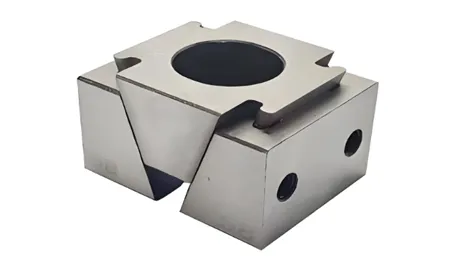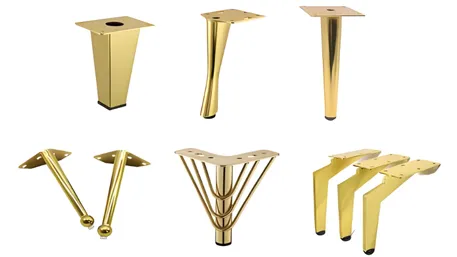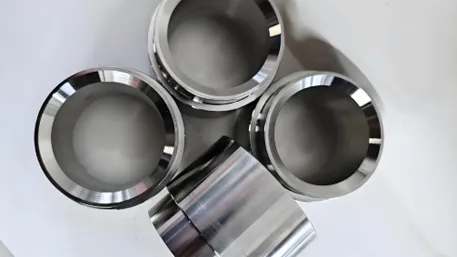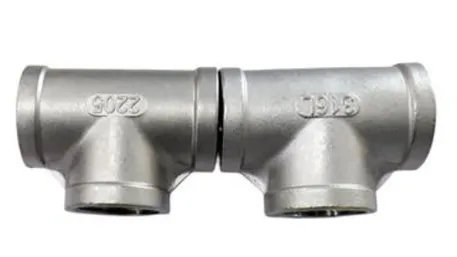As a national specialized and sophisticated enterprise with 25 years of focus on high-end precision die casting, GOLDCATTLE Die Casting has always centered on “micron-level precision • full-link innovation.” We provide customized aluminum alloy and zinc alloy die casting services to over 30 renowned global telecommunications brands. With an annual delivery of more than 10 million telecommunications components, a yield rate of 98% for 0.5mm thin-walled parts, and an electromagnetic shielding effectiveness of ≥60dB, we set a new benchmark for precision die casting with our exclusive solutions tailored to the telecommunications industry.
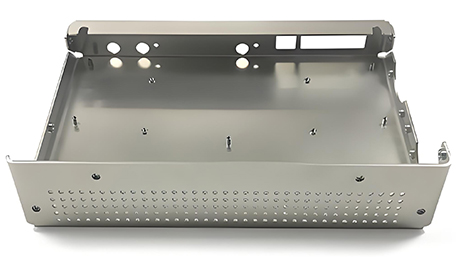
Table of Contents
Telecommunications Product Die Castings: The Core Vessels of the 5G Era
Six-Dimensional Customization Process: Precise Mapping from ID Design to Mass Delivery
Four Core Technologies: Solving the Three Key Pain Points of Telecommunications Components
Full-Process Precision Control: Defining the Ceiling of Industry Precision
Agile Service System: Matching the Rapid Iteration Needs of Telecommunications Products
Telecommunications Die Casting FAQs: Your Dedicated Technical Advisor at Your Service
1. Telecommunications Product Die Castings: The Core Vessels of the 5G Era
The requirements of telecommunications products for die castings, namely “precision, lightweight, and functionality,” are driving die casting technology to new heights:
Deep Adaptation of Material Properties
Aluminum Alloys (ADC12/A6061):
Thermal conductivity ≥180W/(m·K), meeting the heat dissipation requirements of high-power devices in 5G base stations (e.g., the temperature of power amplifier module housings ≤65°C).
Density of 2.7g/cm³, 50% lighter than zinc alloy, helping to reduce the weight of mobile phones (the weight of single-piece die castings ≤15g).
Anodic oxidation film thickness of 5 – 15μm, enabling matte, high-gloss, or gradient colors (color deviation ΔE≤1.0).
Zinc Alloys (Zamak 3):
Electromagnetic shielding effectiveness ≥60dB (when the coating thickness is 8μm), effectively blocking signal interference (e.g., the attenuation rate of router shielding covers >99%).
Dimensional accuracy at CT4 level (±0.03mm), suitable for precise connector pin holes (hole diameter tolerance ±0.02mm).
Typical Application Scenarios
Consumer Electronics: Mobile phone frames (wall thickness 0.8mm, flatness ≤0.1mm), wireless earphone charging cases (surface roughness Ra≤0.4μm).
Network Equipment: Router heat dissipation housings (fin height tolerance ±0.05mm), 5G base station filter cavities (geometric tolerance ±0.03mm).
Wearable Devices: Watch cases (dimensions ≤45mm×45mm, weight ≤20g), AR glasses brackets (complex curved surface fitting accuracy ±0.02mm).
2. Six-Dimensional Customization Process: Precise Mapping from ID Design to Mass Delivery
Requirement Decoding: Capturing the Three Core Demands of Telecommunications Products
Appearance Definition:
Accept ID drawings (STP/IGS format), lock in surface treatment processes (anodic oxidation, micro-arc oxidation, in-mold injection), and provide samples of more than 20 surface effects such as leather texture, brushing, and CD pattern (sample cycle: 3 days).
Structural optimization: For the undercut structure of mobile phone frames, design 3 sets of slider molds (demolding draft angle 0.5° – 1°) to ensure that the assembly gap after CNC machining ≤0.05mm.
Function Definition:
Heat dissipation parts: Simulate the heat flow path through Flotherm, optimize the fin spacing (recommended 2 – 3mm) and thickness (1.2 – 1.5mm), and ensure that the thermal resistance ≤5°C/W.
Shielding parts: Calculate the thickness of the electromagnetic shielding layer (recommended 8μm zinc alloy coating or 1μm aluminum alloy conductive oxidation), and simulate a shielding effectiveness pass rate ≥99%.
Mold Development: Precision 攻坚 at the 0.005mm Level
Mirror-Finish Mold Technology:
The cavity is made of imported Japanese SKD61 steel, ultra-precision polished for 12 hours (Ra≤0.1μm), and coated with PVD titanium (film thickness 3μm), achieving a “zero orange peel” surface for mobile phone frames (gloss ≥90GU).
Precision insert design: For 0.3mm micro holes (such as earphone holes), use tungsten steel cores (hardness HRC65), with dimensional accuracy controlled at ±0.01mm.
Enhanced Mold Flow Analysis:
Exclusive solution for thin-walled parts (0.5mm): Increase the inner gate speed to 60m/s, injection pressure to 150MPa. Predict the position of weld lines through Moldflow and add exhaust slots (depth 0.03mm) in corresponding areas of the mold.
Die Casting Production: Closed-Loop Control of Micron-Level Parameters
Intelligent Die Casting Islands:
Equipped with 100 – 500T cold chamber die casting machines, injection position accuracy ±0.02mm, real-time mold temperature monitoring (deviation ±2°C), ensuring that the dimensional fluctuation of 5G base station housings ≤±0.03mm/m.
Vacuum die casting technology: Vacuum degree ≤50mbar, reducing the porosity to less than 0.5% and avoiding the attenuation of shielding effectiveness caused by internal defects of signal shielding parts.
Post-Processing and Finishing: A Nano-Level Surface Revolution
Precision Machining:
Mobile phone frames are processed by five-axis CNC machines (positioning accuracy ±0.005mm), with edge R – angle error ≤±0.01mm, achieving seamless fitting of 2.5D curved surfaces with the screen.
Connector port tapping: Use German automatic feed taps, with pitch accuracy ±0.003mm, and the pass rate of go – no – go gauge detection is 100%.
Surface Treatment Matrix:
Anodic oxidation line: Supports 16 – bit Pantone color customization, film thickness uniformity deviation ≤5%, passing the salt spray test for 48 hours without corrosion (meeting the requirements of outdoor telecommunications equipment).
In – Mold Decoration (IMD): Achieves 3D curved surface printing, with adhesion ≥5N/cm (cross – hatch test), and abrasion resistance ≥100,000 times (3 times better than industry standards).
Full-Dimension Inspection: 26 Telecommunications-Exclusive Indicators
Accuracy Inspection: Coordinate Measuring Machine (CMM) detects flatness (≤0.05mm/100mm), perpendicularity (≤0.03mm), and the diagonal dimension tolerance of mobile phone frames is ±0.02mm.
Function Inspection:
Electromagnetic shielding box test (frequency 1 – 10GHz), shielding effectiveness ≥60dB (10dB better than industry standards).
Air tightness test (pressure 10kPa), leakage rate of 5G waterproof housings ≤5cc/min (meeting IP67 level).
Flexible Delivery: Matching the Fast Pace of the Telecommunications Industry
Rapid Prototyping: Simple molds (resin molds or aluminum molds) can deliver the first sample within 7 days, supporting rapid ID design verification (prototype pass rate 95%).
Mass Production: The intelligent production scheduling system balances the needs of multi-variety and small-batch production (minimum batch 500 pieces), and the order change response time ≤24 hours.
3. Four Core Technologies: Solving the Three Key Pain Points of Telecommunications Components
Thin-Wall Molding Technology —— Conquering the 0.5mm Limit
High-Speed Filling Control: Increase the injection speed to 80m/s, and with 3D printed conformal runners (reducing pressure loss by 20%), achieve 100% filling for 0.5mm wall thickness (length-width ratio >10:1) (industry average 85%).
Cooling System Revolution: Embed micro heat pipes (diameter 1mm) in the mold, increasing local cooling efficiency by 30% and avoiding shrinkage of thin-walled parts (shrinkage rate ≤0.3%).
Precision Positioning Technology —— Solving the Assembly Challenges of Multiple Components
Integrated Design of Datum Surfaces: Directly form assembly datum bosses (height tolerance ±0.01mm) in the die casting mold, reducing the secondary positioning error of CNC machining (traditional process error ±0.03mm).
Automated Tool Setting System: During machining, automatically compensate for mold wear through a laser tool setting instrument (compensation accuracy ±0.002mm), ensuring dimensional stability of ≥99.5% in continuous production of 100,000 pieces.
Electromagnetic Compatibility Technology —— Building a Signal Safety Barrier
Optimization of Shielding Layer Thickness: Determine the optimal coating thickness (shielding effectiveness reaches 65dB when zinc alloy is nickel-plated to 8μm) through CST electromagnetic simulation, improving efficiency by 15% compared with empirical designs.
Grounding Structure Design: Add 0.2mm high conductive bumps (spacing 5mm) at the edge of the shielding cover to ensure that the grounding resistance with the PCB board ≤50mΩ.
Lightweight Technology —— Facilitating Equipment Miniaturization
Structural Topology Optimization: Use Altair Inspire for lightweight design, reducing materials by 30% while maintaining strength (e.g., reducing the weight of router housings from 28g to 19g) and increasing stiffness by 20%.
Application of Magnesium Alloys: AZ91D magnesium alloy die castings have a density of 1.8g/cm³, 33% lighter than aluminum alloy, and have been applied to high-end AR glasses frames (single weight ≤12g).
4. Full-Process Precision Control: Defining the Ceiling of Industry Precision
Material Control: ppm-Level Impurity Control
Aluminum Alloys: Control the Si content within 11.5% – 12.5% (deviation ±0.1%), Fe≤0.9% (spectral analysis accuracy 0.01%), ensuring no “black spot” defects after anodic oxidation.
Zinc Alloys: Pb+Cd+Hg≤5ppm (detected by ICP-MS), avoiding “zinc pest” blistering during electroplating (the incidence rate has decreased from 1% in the industry to 0.05%).
Process Control: Second-Level Data Collection
Collect 32 parameters per molding cycle (injection pressure, mold temperature, filling time), and real-time linkage through the PLC system and MES. When the parameter fluctuation exceeds ±2%, automatically stop for calibration.
Mold life management: Mandatory inspection after the core has been used 10,000 times (replace when the wear amount >0.005mm), ensuring that the dimensional Cpk of continuous production ≥1.67.
Reliability Control: Simulating Extreme Scenarios
Thermal Shock: Cycle 500 times at -40°C – 85°C, with the dimensional change of mobile phone frames ≤0.02mm (industry standard 0.05mm).
Drop Test: Drop 10 times from a height of 1.5m on six sides, with no cracks or deformation of die castings (meeting MIL-STD-810G standard).
5. Agile Service System: Matching the Rapid Iteration Needs of Telecommunications Products
R&D Collaboration: Improving Design Feasibility from the Source
Early Intervention: Participate in customer ID design reviews, provide mold parting suggestions (e.g., avoiding deep cavity undercut structures, reducing mold costs by 20%).
Joint Development: Co-build a 5G material database, recommend low-dielectric-loss alloys (dielectric constant ≤6.0) for high-frequency devices, and reduce signal attenuation.
Delivery Guarantee: Accelerating the Entire Chain
Emergency Response: Keep 5 sets of general mold substrates in stock, and compress the delivery cycle of complex structure molds to 4 weeks (industry average 6 – 8 weeks).
Quality Traceability: Assign a unique QR code to each product. By scanning the code, you can check die casting parameters, inspection data, and production teams, achieving problem tracing within 10 seconds.
After-Sales Value-Added Services: Full Lifecycle Technical Support
On-Site Service: Provide on-site process support for strategic customers (e.g., 24-hour on-site support during new product ramp-up, increasing the yield rate to 98%).
Continuous Optimization: Collect assembly feedback every quarter, and have helped customers optimize the structural design of telecommunications equipment 89 times in total, increasing assembly efficiency by 15%.
6. Telecommunications Die Casting FAQs: Your Dedicated Technical Advisor at Your Service
Q1: What is the minimum wall thickness of telecommunications die castings you can produce?
A: Currently, the mature process can stably produce parts with a wall thickness of 0.5mm (such as the sides of mobile phone frames). The production of 0.3mm wall thickness parts is under sample verification (yield rate 85%).
Q2: Can the surface treatment achieve gradient colors?
A: Yes, anodic oxidation gradient processes (such as red-blue gradients) are supported. The gradient color is achieved through two oxidation coloring processes, with the color transition area ≤1mm, and it has been applied to high-end mobile phone casings.
Q3: What are the inspection standards for shielding parts of telecommunications equipment?
A: We provide shielding effectiveness inspection reports (≥60dB in the 1 – 10GHz frequency band), and third-party inspections can be carried out according to the GJB 6190-2008 standard.
Q4: How long does it take from drawing confirmation to mass production?
A: Standard process: 3 days for requirement confirmation → 10 days for mold design → 20 days for mold machining → 5 days for trial molding → 3 days for production preparation, totaling about 41 days (15% faster than the industry average).
Choose GOLDCATTLE Die Casting and seize the opportunity of 5G precision die casting!
In the development trend of “lightweight, thin, and precise” telecommunications products, with 25 years of technical accumulation, we offer you a full-process precision solution from material selection to surface treatment. Leave a message now with your customization requirements for telecommunications products to obtain an exclusive DFM analysis report and rapid prototyping plan, and let every die casting become a quality cornerstone of the 5G era!

